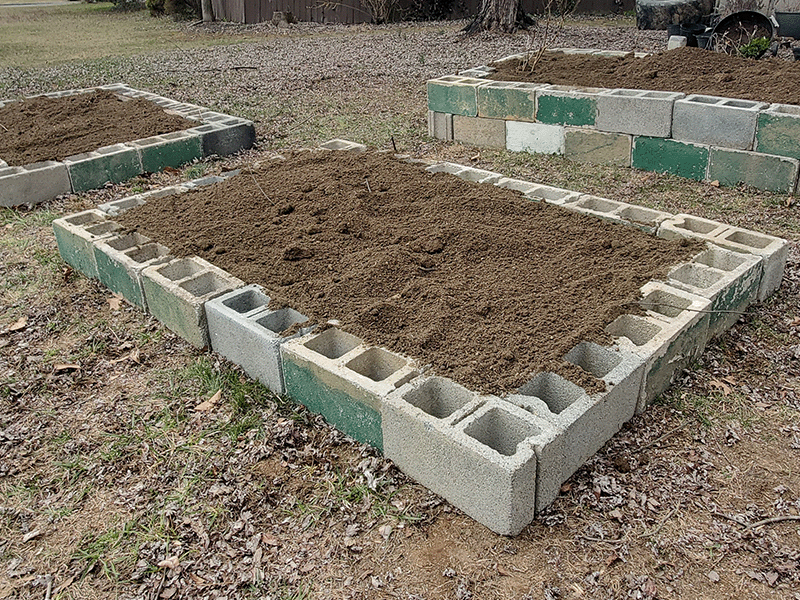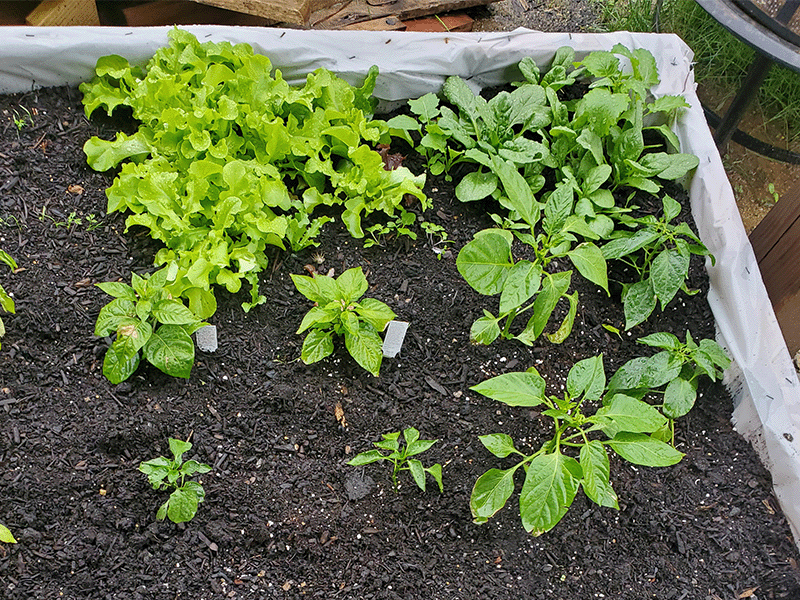Milton Hershey School AEE Expert Shares 10 Ways to Reduce, Reuse, and Recycle While Gardening
As spring rolls in, the outdoors change and become full of life. During this transition to warmer weather, many people want to start gardening. But, the cost and complexity stops them. As a lifelong gardener, Milton Hershey School Horticultural Instructional Advisor Lindsay Coulter focuses on reusing materials—like cinder blocks, storage totes, flowerpots, and even a charcoal grill.

By doing this, she grows her own food in free or low-cost ways. To help you start your own affordable garden, read her 10 tips:
1. Composting
Like us, plants require the right nutrients to thrive and produce a beautiful harvest. Additives such as fertilizer, manure, and compost are essential. You can make these at home by composting. To get started, put kitchen scraps into a pile, tumbler, or worm bin. With frequent turning, you can create nutrient-rich plant food for your garden beds.
2. Eggshells
Tomatoes and peppers are common in household gardens. Did you know these plants suffer from calcium deficiencies? To help your harvest, use eggshells. Bake eggshells at 250 degrees Fahrenheit for two hours to remove bacteria. Then, crush into soil or compost. The eggshells will break down and release calcium over time. Don’t have time to bake? Add your eggshells to vinegar at a 1:10 ratio for a quick calcium fertilizer.
3. Reused Materials
If you shop for raised garden beds, you’ll find beautiful, expensive kits. Many gardeners skip the box stores and build their own beds. Search your local marketplace websites for supplies like old pallets and cinder blocks. These, often free materials, are great to create your own raised garden bed. Also, you can build garden space with old cattle troughs, tires, truck bed liners, or charcoal grills.
4. Rainwater Collection
Watering a garden can get expensive, especially during hot summer months. That’s why collecting and storing rainwater is important. Commercial rain barrels that connect to a home gutter system are common. You can get creative with a 55-gallon barrel or trash can. Place a few cinder blocks underneath as a base and add a spigot for an affordable rain barrel. Just be sure to keep the barrel above the ground. This allows gravity to create pressure to water your garden.
5. Cardboard and Plastic for Weed Suppression
Weed control is a battle in garden beds. Getting a head start early in the season is key. For 6-8 weeks in early spring, lay cardboard or dark plastic—like soil bags or trash bags. This creates a dark environment where germinating weed and grass seed struggle to survive. You can even build your garden bed on top of cardboard. This adds nutrients to the soil as the cardboard breaks down.
6. Wood Chip Mulch
Another tip to control weeds, add a thick layer of wood chips to walkways and on top of beds. Not only will this suppress weeds, but it can increase your garden’s water retention. Plus, many communities offer wood chip mulch for free or at low-cost.
7. Seed Collection
Many gardeners purchase transplants from their local garden center or a school plant sale. But, save money by keeping seeds from your favorite varieties. When your fruits or veggies are ripe, remove some seeds, wash them, and let them dry. Store the seeds in a bag at room temperature or in the fridge to increase their storage lifespan.
8. Seed Share and Plant Swap Groups
Social media is great for anyone looking to start or expand a garden. Local groups dedicated to seed shares or plant swaps provide inexpensive or cost-free access to seeds and plants. Many groups are connected to local libraries where community members can take or donate seed for others.
9. Reuse Plastic Pots or Use Cardboard Pots
Purchasing new pots every year gets expensive. Don’t throw away cheap plastic pots. Reuse them several times before they break down. For a biodegradable option, use empty toilet paper and paper towel rolls, or cardboard egg trays. When your seedlings are ready, plant the cardboard pots into the garden or remove them and use the cardboard in your compost.
10. Be Creative, Add Color
Creativity in the garden will keep you and your kids engaged and learning. Plant a variety of crops or try a new trellising technique. Also, children are drawn to gardening when there is a splash of color. Add color with flowers and fun decorations. These items provide helpful benefits too. For example, rocks painted like strawberries deter birds if placed before the berries ripen. Also, flowers planted within veggies increase pollinator presence and aid in suppressing pests.



